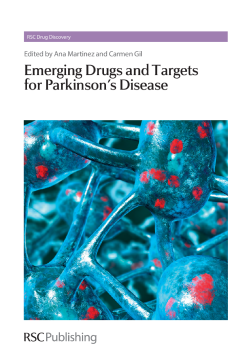
Additional Information
Book Details
Abstract
Affecting over 1.5 million people across the world, Parkinson's disease is a progressive neurological condition characterized, in part, by the loss of dopaminergic neurons in the substantia nigra pars compacta. It affects 1.5% of the global population over 65 years of age. As life expectancy is increasing, over the next few years the number of patients with Parkinson´s disease will grow exponentially. To date, there are no available treatments that are capable of curing Parkinson´s disease, and the current goal of therapy, dopamine replacement strategies, is to reduce symptoms. After several years of disease progression, treatment is complicated by the onset of motor fluctuations and dyskinesias. This information reveals the great importance and social need of finding an effective therapeutic intervention for Parkinson´s disease.
This exemplary new book reviews some of the most outstanding examples of new drugs currently in pharmaceutical development or new targets currently undergoing the validation process to try to reach the Parkinson´s drug market in the next few years as potential disease modifying drugs. Providing up to date and comprehensive coverage, this book is essential reading for researchers working in academia and industry in any aspect of medicinal chemistry or drug discovery.
Professor Martinez is a Research Professor at Instituto de Química Médica-CSIC. She has active research lines in the design and synthesis of new drugs for neurodegenerative diseases, searching for new targets to treat these devastating diseases. Currently, she ledas an interdisciplinary research group directed towards the discovery and development of new drugs for innovative targets in neurodegenerative disorders such as Alzheimer's Disease, Parkinson's Disease, Amyotrophic lateral sclerosis or Multiple Sclerosis.
Dr Gil obtained her PhD in Pharmaceutical Sciences from Universidad Complutense de Madrid before working with Prof. Dr. Stefan Bräse in the Kekulé Institute for Organic and Bioorganic Chemistry at the University of Bonn (Germany) where she was involved in the development of T1 triazene linker that has been successfully used as a linker for arenes. During this time she was a Marie Curie fellow of the European Union. She is currently working at the Instituto de Química Médica-CSIC, where she is responsible for the design and synthesis of biologically active organic molecules in the neurodegenerative field.
